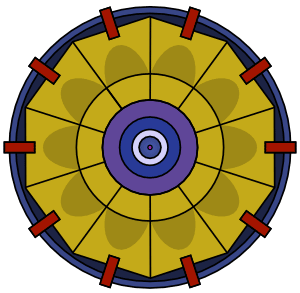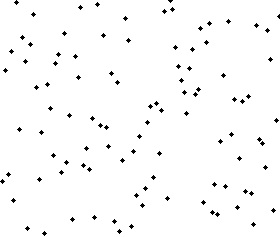Take a moment to consider if you’re familiar with or have heard of the following terms.
- In the field of physics and related events — Manhattan Project, Atomic Energy Commission, mutual assured destruction (MAD), hydrogen bomb, quantum mechanics, fluid dynamics, Dirac-von Neumann axioms, density matrix
- In the field of computing — Merge sort, Monte Carlo method, pseudorandom numbers, quantum computing, quantum information theory, quantum logic, linear programming, concept of the technological singularity
- In the field of mathematics — Set theory, ordinal numbers, von Neumann paradox, Ergodic theory, operator theory, measure theory, continuous geometry, lattice theory, game theory, mathematical economics, mathematical statistics
- In other related fields — Theory of self-replication (DNA), cellular automata, von Neumann universal constructor, von Neumann probe, computed weather forecasting, concept of global warming
An Overview of John von Neumann’s Life
John von Neumann (pronounced von Noy-mun) has either invented, pioneered, or heavily contributed to each of these fields. Von Neumann was born in Budapest, Hungary, on December 28, 1903, to a wealthy, nonobservant Jewish family.
To say that von Neumann was one of the smartest human beings to ever walk the face of the planet would be an understatement. By the age of 6, von Neumann was able to divide two eight-digit numbers instantly in his head. By the age of 8, he was familiar with both differential and integral calculus. His education, at one of the top schools in Budapest, saw von Neumann graduate with one of the greatest academic cohorts in history, which included mathematician Paul Erdos and physicist Edward Tellar; the group came to be known as “the Martians.”
At age 19, von Neumann had published papers detailing the now-modern definition of ordinal numbers, earning himself the Eotvos national prize for mathematics. In 1926, he graduated with a simultaneous Ph.D. in mathematics and a bachelor’s degree in chemical engineering (the latter at his father’s insistence). In 1928, he was the youngest person to ever be elected privatdozent (a studying professor) at the University of Berlin.
John von Neumann’s Role in the Manhattan Project
After completing his education, von Neumann emigrated to the United States upon invitation from Princeton University in New Jersey as a professor of mathematical physics. Von Neumann took a great interest in the field of explosions, which was very difficult to model accurately at the time without computers, given the highly dynamic nature of the subject.
His work eventually led him to be recruited for the Manhattan Project, which was tasked with developing the first atomic bomb. He made a critical contribution to the project, developing the concept and design of the bomb ignition.
Put simply, a fission nuclear device works by creating a high-pressure, high-temperature compression of a uranium-235 core, or a “supercritical core.” This creates a state in which neutrons produced from the rapidly decaying uranium-235 have a high probability of impacting other uranium-235 atoms, causing them to decay and produce a chain reaction, releasing high amounts of energy in the form of heat and light.
In order to produce this supercritical state, many methods were suggested. Von Neumann’s method was the one that succeeded, and is still in use today. Here’s how it works: By carefully modeling a series of shaped explosions around the core to detonate simultaneously, the high temperatures and pressures needed for ignition are produced. This is known as the implosion assembly method.

John von Neumann’s Work on the Atomic Energy Commission
After his work on the Manhattan project, von Neumann went on to be a key member of the Atomic Energy Commission. His work on nuclear devices continued, and eventually led to the development of the hydrogen bomb.
Von Neumann is also credited with the development of the equilibrium strategy of mutual assured destruction. The goal of this is to assure the non-use of nuclear weapons, by assuring that any attacker using such weapons would be completely obliterated by their opponents, as any mass nuclear strike cannot possibly destroy all missiles in an enemy arsenal, and even a small percentage of surviving devices can cause massive devastation.
Von Neumann was convinced that his Soviet scientist counterparts were hard at work on the intercontinental ballistic missile (ICBM) nuclear delivery system and urged his superiors to work on similar systems. His predictions were soon shown to be correct after the Soviets launched Sputnik, the first artificial satellite, proving to the world that the Soviets had developed the capability to launch a payload to any location on the planet. For his work in national defense, former President Dwight D. Eisenhower awarded von Neumann the Medal of Freedom.
John von Neumann’s Contributions to the Computing Field
Von Neumann also made revolutionary contributions in the field of computing that went on to influence other related fields. Von Neumann founded the first mathematical framework for quantum mechanics, now known as the Dirac-von Neumann axioms.
His work laid the foundation for quantum logic and the creation of quantum computers, of which we are just beginning to take advantage of nearly a hundred years later. He invented the mathematical foundation for game theory, which is used in many scientific fields including computing, economics, and psychology. He also revolutionized the field of economics by inventing the mathematical models for simulating an economy.
Von Neumann is said to have invented merge sort on the fly, after being asked a one-off question by one of his colleagues. He invented the Monte Carlo method, which utilizes random sampling to obtain numerical results for a given problem; this is used in the fields of engineering, meteorology, statistics, finance, and law. Von Neumann also invented the concept of self-replication, which assisted with the discovery of DNA and is the core concept behind von Neumann probes.

Image credit: Hellis
Creative Commons Attribution-
Share Alike 2.5 Generic license
John von Neumann’s Work in Mathematics
Von Neumann’s greatest contributions, however, were in the field of mathematics. He revolutionized set theory with his doctoral thesis, “The Axiom of Foundation.” His method of inner models would go on to become an essential instrument in set theory. He made foundational contributions to nearly every branch of mathematics, including ergodic theory, operator theory, measure theory, continuous geometry, and lattice theory.
Of von Neumann’s computational skill, he was said to be superhuman. Some of his contemporaries on the Manhattan Project made such remarks as “I have sometimes wondered whether a brain like von Neumann’s does not indicate a species superior to that of man,” and “One had the impression of a perfect instrument whose gears were machined to mesh accurately to a thousandth of an inch.”
Many said that keeping up with von Neumann was impossible. George Dantzig once came to von Neumann with an unsolved linear programing problem, and von Neumann responded with an hour-long, off-the-cuff lecture on the hitherto unconceived theory of duality, which solved the problem.
Von Neumann also possessed the power of absolute recall. Once he was asked to recite “A Tale of Two Cities” before being asked to stop after a perfect 15-minute recitation.

John von Neumann’s Legacy
Von Neumann died of cancer in 1955, at the age of 53. Many awards in mathematics are named in his honor, including the John von Neumann Theory Prize and the IEEE John von Neumann Medal. The von Neumann crater on the moon is named after him. The John von Neumann University was established in Hungary in 2016 in his name.
Von Neumann’s presence on Earth, while brief, will be felt for centuries to come.

